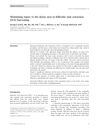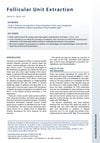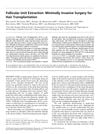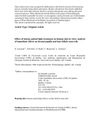TLDR For East Asians, using a deeper and larger punch in FUE is crucial to avoid follicle damage.
The study on follicular unit extraction (FUE) in East Asians highlighted specific challenges due to their unique facial and hair characteristics. East Asians typically preferred a flat and low hairline, which required more grafts. Their hair follicles were thicker and deeper compared to Caucasians, and they had a lower hair density of about 120–130 hairs/cm², significantly less than the 190–200 hairs/cm² in Caucasians. This lower density, combined with a higher scalp–hair color contrast and a tendency for idiopathic occipital fibrosis, meant fewer available follicles for harvest. The study concluded that minimizing follicle damage during harvest and maximizing engraftment was crucial. It recommended using a deeper punch insertion with a larger diameter punch for FUE in East Asians, emphasizing the importance of understanding follicle anatomy and FUE techniques to reduce the risk of follicle damage.
 13 citations
,
August 2016 in “Journal of Cosmetic Dermatology”
13 citations
,
August 2016 in “Journal of Cosmetic Dermatology” Using normal saline in vertical extraction for hair transplants reduces donor area injury more than acute extraction.
 45 citations
,
August 2013 in “Facial Plastic Surgery Clinics of North America”
45 citations
,
August 2013 in “Facial Plastic Surgery Clinics of North America” Using sharp tools and the right techniques in hair transplant surgery leads to less damage to hair follicles.
 41 citations
,
August 2013 in “Facial Plastic Surgery Clinics of North America”
41 citations
,
August 2013 in “Facial Plastic Surgery Clinics of North America” FUE provides minimal scarring and quick recovery in hair transplantation, and surgeons not using it may lag in technology.
 29 citations
,
January 2010 in “PubMed”
29 citations
,
January 2010 in “PubMed” FUE hair transplants offer minimal scarring and are good for short hairstyles but are time-consuming and can be costly.
 153 citations
,
August 2002 in “Dermatologic Surgery”
153 citations
,
August 2002 in “Dermatologic Surgery” Follicular Unit Extraction (FUE) is a less invasive hair transplant method with minimal scarring, suitable for about 60% of patients, especially those needing fewer grafts and quicker recovery.
 October 2021 in “Indian Journal of Plastic Surgery”
October 2021 in “Indian Journal of Plastic Surgery” You can use hair from other parts of the body for scalp hair restoration.
2 citations
,
September 2017 Hair and scalp diseases can affect hair transplant success in Asians, and managing them is crucial.
 22 citations
,
January 2017 in “Indian Dermatology Online Journal”
22 citations
,
January 2017 in “Indian Dermatology Online Journal” Body hair transplants can treat baldness but differ from scalp hair and need more research on long-term results and side effects.
 6 citations
,
December 2014 in “Clinical and Experimental Dermatology”
6 citations
,
December 2014 in “Clinical and Experimental Dermatology” Hair density and thickness decrease in all scalp areas for East Asians with AGA.
 6 citations
,
June 2013 in “British Journal of Dermatology”
6 citations
,
June 2013 in “British Journal of Dermatology” Intense pulsed light treatment mainly damages pigmented hair parts but spares stem cells, allowing hair to regrow.
January 2001 in “대한피부과학회지” Horizontal sectioning helps diagnose hair loss, but Korean follicle differences matter.
 October 1987 in “Clinics in Dermatology”
October 1987 in “Clinics in Dermatology” Scalp reduction can improve hair distribution in certain baldness cases but requires careful patient selection and understanding of facial structure.









